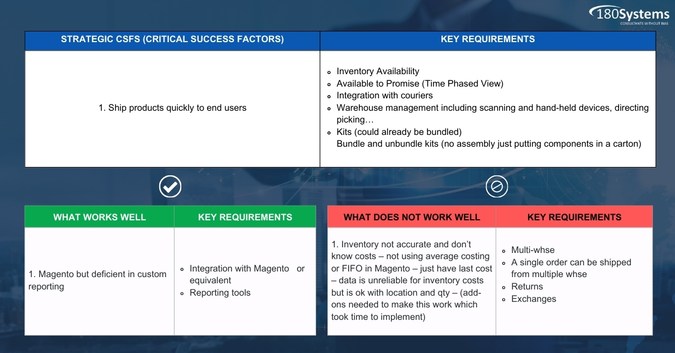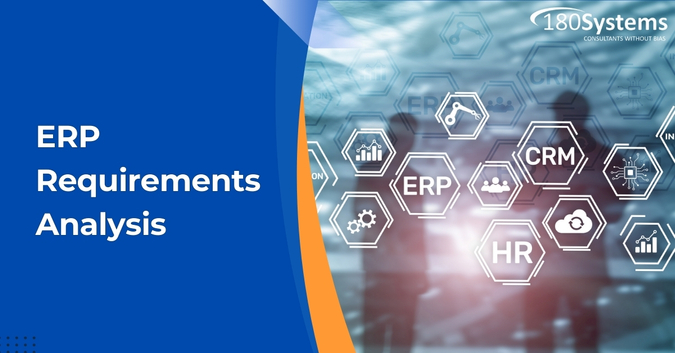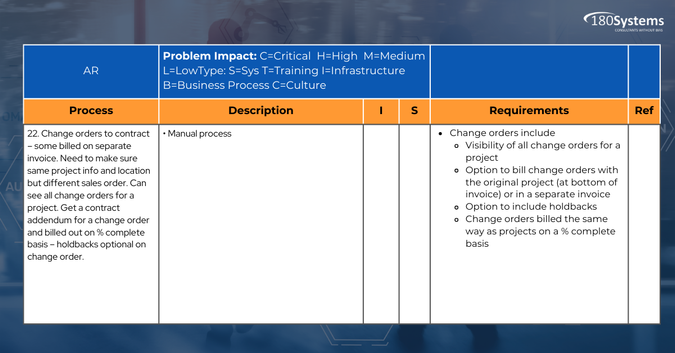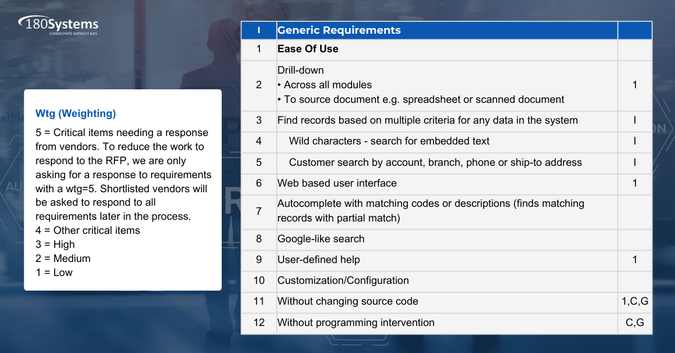Executive View
There are multiple ways to do define requirements depending on the size and complexity of an organization. However, you should always start with executive group. Ask them to identify the Critical Success Factors (CSFs) and then discuss how a system could help you achieve the CSFs. Also ask them to identify the biggest problems and then discuss how a system could eliminate them. Finally ask them what they like about their existing system, and these also become requirements. If an organization also has middle management, then you want to do repeat the discussion of problems and strengths but it will probably not be helpful to discuss critical success factors.
Here’s an example of mapping key requirements to CSFs, what works well and what does not work well.

Business Process Review
You will get many high-level ERP requirements and some detailed requirements from these meetings but it’s not a deep dive. The best way to get detailed requirements is to conduct a business process review where you ask the employees in the trenches doing the day-to-day work to describe and show their business process. They should be encouraged to talk about problems as every problem is an opportunity in a new ERP system.
You should also classify the problems in terms of type (system, training, infrastructure, business process and culture) as well as the impact (critical, high medium and low). For those problems that are caused by missing functionality in the system, identify the requirements that will eliminate the problems. But don’t expect an employee who has been doing the same process for many years to suggest these ERP requirements. They don’t know what they don’t know. Also don’t forget about what is working well (does not have problems). The related requirements should also be recorded.
It’s a good idea to take screenshots of the processes shown as details on the screen will be useful later if something was missed. You should link each screenshot to the relevant business process. Here is an example:
You also need to give each person involved in the various meetings an opportunity to review reports that have been prepared.
ERP Requirements Review
Next you should organize all the requirements identifying the source for each one so that if there is a question about it, it can be easily tracked back and understood. Experienced consultants will also add requirements/best practice that were not discussed in the meetings but are likely to be useful. Next you need to review the requirements with a core ERP team who will be able to pass judgement on requirements to ensure they are unambiguous, accurate, clear, complete and prioritized. Here’s an example:
The requirements will be used throughout the selection and implementation process:
- Used in an RFP to evaluate which ERP systems are a good fit
- Used in demonstrations to identify requirements to be demonstrated
- Used in contract negotiation to define what is included and what is not included
- Used in implementation to make sure key requirements are not overlooked
So get it right, and avoid costly implementation problems when unknown ERP requirements emerge.


